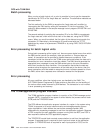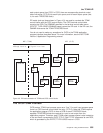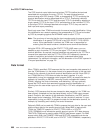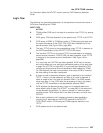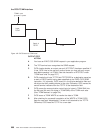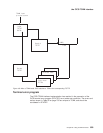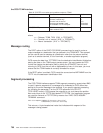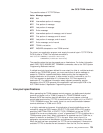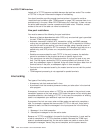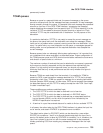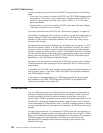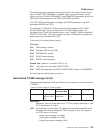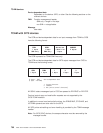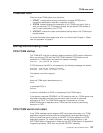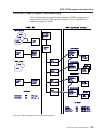locked until a TCTTE becomes available because the task has ended. The number
of TCTTEs in the pool influences the degree of multitasking.
You should consider providing enough terminal entries in the pool to avoid an
‘unsolicited input’ condition (see “TCAM queues” on page 703), because there is no
available entry in the pool. When DFHTCAM scans for a free entry, it does not scan
the entire table because it carries a pseudo-end-of-table value. Therefore, unused
entries at the end of the table can never be referred to.
Line pool restrictions
You must be aware of the following line pool restrictions:
v Because of device dependencies within CICS, only one terminal type is permitted
for each TCAM line (process queue).
v Automatic transaction initiation (ATI), transaction routing, and BMS message
routing are not applicable in the pool environment. If ATI is required for functions
and you still want to use pooling, you should consider using a special queue of
nonpooled entries suitable for ATI. For example, 3270 displays could be put on a
pooled entry, and 3270 printers on a nonpooled queue to cause ATI to the
printers.
v Statistics are accumulated for each TCTTE in the pool; however, the statistics
cannot be correlated to the physical terminals or specific logical units.
v Only one signon can exist for all terminal entries in a given line pool at any one
time. The first signon received by CICS is communicated to all terminals in the
pool. Any subsequent signon is rejected. A sign-off clears the signon data from all
terminal entries in the pool; a subsequent signon is then accepted.
v Terminal and line requests issued by the master terminal are not valid for pooled
terminals.
v TCAM segment processing is not supported for pooled terminals.
Line locking
Two types of line locking can occur:
v A temporary lock that resolves itself in time
v A permanent lock that remains permanent unless you take action in the terminal
error program.
A temporary line lock occurs when no TCTTEs are available in the pool and a new
transaction appears on the input queue. CICS locks the queue until an existing task
completes execution, thus freeing a TCTTE. In this case, the completion of existing
tasks is not dependent upon additional input from the queue.
A permanent line lock can occur when multiple reads are required to complete a
task. For example, suppose that there are two TCTTEs in the pool, that a task is
attached to each, and that the messages in the input queue are in the following
order:
1. Message 1 for a third transaction
2. Subsequent messages for the two active tasks.
Because no TCTTE is available in the pool for the third transaction, it must wait for
a task to complete for a TCTTE to become available. Because the TCAM input
queue is processed sequentially, the two active tasks are unable to receive their
subsequent messages. Hence, they cannot complete, and the queue remains
the CICS-TCAM interface
702
CICS TS for OS/390: CICS Customization Guide



